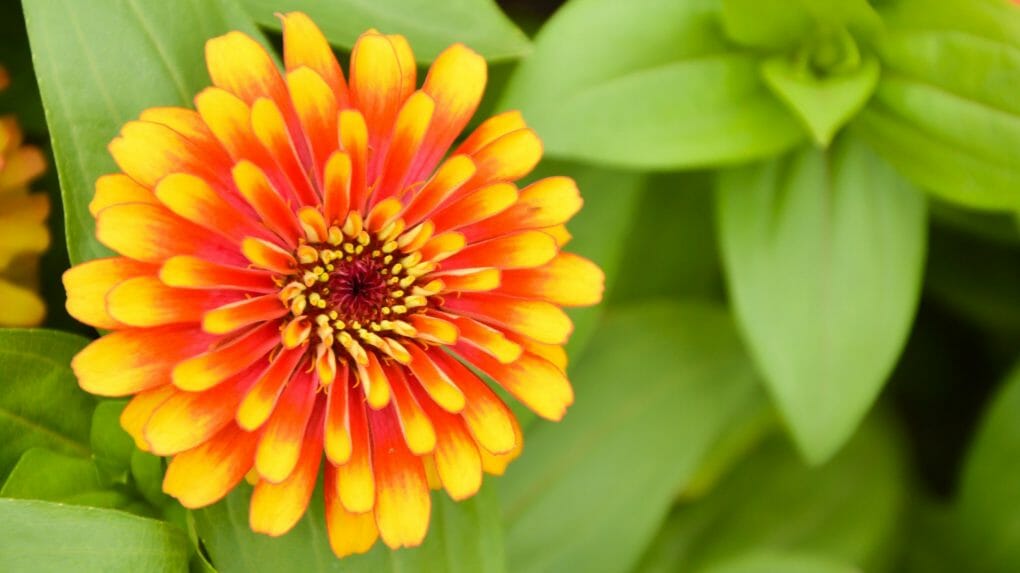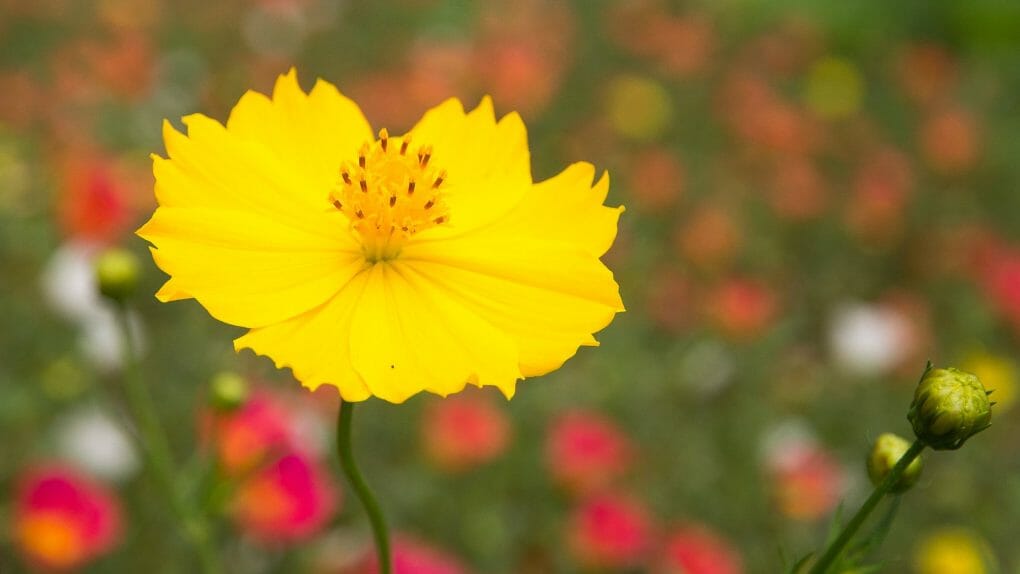When to Collect Zinnia Seeds? Ways to Collect Tips And Ideas For Harvesting and Saving

Some people collect zinnia seeds when the flowers are vibrant and colorful in the fall. Others wait until later in the season when the plants have fully bloomed and the petals have faded. Once the flower has died, it will be brown and feel dry when you touch it. At this point, you can pick the zinnia seeds. To do this, cut the plant’s seed head off carefully. If you shake or tap the seed head on the paper, the seeds will fall. Zinnia seeds can be collected at any time during the growing season, but they are most fruitful in late summer and early fall. In addition, cut Zinnia blooms do not produce viable seeds that can be saved for next year’s crop. But don’t you know that zinnia can self-seed in suitable growing conditions? The seed heads will develop when zinnia flowers mature, and their petals fall off. These seed heads can be left in place to dry and eventually release their seeds, which can then germinate and grow into new zinnia plants the following season.
Table of Contents
The Point of Keeping Seeds
It’s not worth gathering and storing seeds if a home gardener can buy seed packets reasonably. Sending seeds from your garden to a far-flung friend is a great way to share your plants with them. Many gardeners have an insatiable thirst for knowledge and relish the chance to try out novel techniques. There’s an enchantment in nurturing a plant from its earliest stages as a small seed you saved from your garden. Growing plants from collected seeds can be a cost-effective alternative to purchasing already-grown plants, especially if you have a large garden. There is a way to guarantee that you will have access to that particular plant next year by saving seeds from it. It is imperative to save seeds to keep rare or heritage varieties of plants alive. Many natural plant species can be successfully propagated in this manner.
Understanding Seeds and Quick Breeding Facts
Pollination Theory and Practice
Perhaps a quick review of pollination’s role would be useful before we dive into which plants make good seed suppliers. The sticky stigma is located at the top of the pistil. The stigma needs to receive pollen from the stamen. Self-pollination occurs when pollen from a plant’s stamens lands on the same plant’s stigma. Cross-pollination and open-pollination are two methods by which plants exchange pollen.
Cross-Pollination
When one kind of plant pollinates another, this is called cross-pollination. Only two members of the same species can cross-pollinate, not members of different species. Growing two or more types of the same plant in the garden can result in cross-pollination due to the movement of wind or insects. This year’s harvest of fruit and flowers will be unaffected, but the seeds will not thrive. Plants grown from those seeds would not be “true-to-type” since they combine characteristics from both parent kinds. In the garden, cross-pollination is sometimes used to produce novel cultivars. Hybrids are created through hand pollination in gardens.
Open Pollination
When insects, birds, and the wind pollinate, we call that “open pollination.” Open-pollinated plants have greater genetic diversity because pollen can freely move between them. The seed will continue to be genetically pure yearly until it is crossed with another variety of the same species. Open pollination applies to all heritage types.
Every gardener has to decide whether to use open-pollinated, heirloom, or hybrid seeds. This is one of the most important choices they have to make. The most important difference between these types is that gardeners should save true-to-type seeds from open-pollinated and heirloom varieties but not from hybrids. So let’s take a look at how heirlooms and hybrids are different.
Heirloom Varieties
Heirloom varieties are open-pollinated. This means that, unlike hybrids, the plants you grow from seeds will have the same traits as the parent plant. And that’s what makes an heirloom last. The goal is to ensure that all the genes for each variety are passed on from one generation to the next. Any changes to an heirloom variety are bad from the point of view of keeping it alive. The overall genetic makeup of the variety would change if any of its traits were chosen for or against it. This means that when you collect seeds from heirloom plants, you should take seeds from many different plants of the same kind. You don’t want to choose seeds from the strongest, healthiest plants or have the biggest blooms.
Hybrid
The X in the name of a hybrid plant shows that it is a cross between two different species of plants. Different genera, subspecies, varieties, and cultivars can also produce hybrids. Hybridization is a way to cross the pollen of two different species in a way that is planned and done by humans. The best parts of each parent plant can be taken from a hybrid plant. Because hybrid seeds come from a cross, they won’t grow “true.” This means that seedlings from a hybrid could have traits from one or both parent plants, or they could be completely different. Sometimes a hybrid seed is sterile and won’t grow at all. Remember that many new perennials are hybrids whose seeds won’t grow into the same plants. If you want the plants to stay true to the original, don’t grow them from seeds. Instead, divide them. If you grow hybrid plants, you must buy new seeds yearly.
Collecting Zinnia Seeds
Since insects can pollinate between different species of zinnias, careful seed preservation is necessary to ensure that your open-pollinated seeds will produce true-to-type flowers. One type every half a mile should be planted if you have a large plot of land, such as a farm. However, that is not a realistic option for most people. Instead, you can prevent accidental cross-pollination by enclosing multiple flower buds in a bag or cage before they open. The flower bag should be left on until the blossom has finished blooming.
Waiting for the blossoms to dry on your plants is an unsightly but necessary step in letting the seeds mature. Choose only robust plants. Don’t save seeds from diseased plants, as powdery mildew can spread to them. The good news is that you only need a few flowers’ worths of seeds to have enough to grow the next year in a garden of normal size. Any remaining blossoms can be picked off before they become an eyesore. Additionally, if you have a sizable garden bed, you might collect seeds from plants farther from the bed’s edge, making the drying blooms less obvious.
Supplies Required:
- Basket/container
- Pruners
- Screen for drying
- Writing utensil
- Envelope(s)
- Glass jar with lid
- Zinnia plants
- Paper towels
- Paper plates
Instructions:
Let the Zinnia Flowers Dry Out Before Picking Them
Let the flower heads of the zinnias dry out entirely on the plant. When the flowers are ready to be picked, they will be dark brown and dry to the touch. If you try to pick a flower before its seeds are prepared, you will get immature seeds that won’t grow.
Once the zinnia flowers are dry, you can cut them off or pull them off the plant. If you don’t want a mix of surprises, label the different kinds separately.
Put the seed heads you’ve collected on a screen so they can dry completely on all sides. Depending on the seed head and water, this could take up to a week.
Set the Zinnia Seeds Free
Spread some paper towels out on a clean, flat surface where you can work to collect the seeds. Put a paper plate over the area and write the name of the variety right on the plate.
Take a dry zinnia flower and “flail” the seed head to release the seeds. You can hit it gently, pull it apart, or rub it between your fingers over the paper plate. The seeds are small and look like arrows. Some may still be attached to the base of a petal. If that’s the case, pull the seed off carefully. Do this with your dried flowers, but throw away the petals and keep only the seeds. Keep the varieties separate.
Let the Seeds Dry
Spread the seeds and let them dry in the open air for a few days. This will help keep them from going bad or growing mold while stored.
Keep the Zinnia Seeds Safe
Store the seeds in a paper bag or envelope when they are dry. If you have more than one kind of zinnia, put their seeds in separate envelopes unless you want them to grow together in your garden. Label each envelope so you remember what’s inside.

Put the seed packet in a glass jar with a lid and store it somewhere cool, dry, and out of the sun. A closet would be great. Once there is no longer a chance of frost for the next growing season, you can plant your seeds outside.
Use your seeds for the greatest results within three to five years.
Zinnia Seed-Saving Tips
Now, if you’re aiming to conserve seeds every year, there are some guidelines you should follow. The following tips for seed-saving apply to a wide variety of vegetation:
Gather Seeds From Several Sources
To comply with the first guideline, you must collect seeds from several plants. This safeguards against inbreeding depression, the loss of vigor in a population caused by repeatedly breeding plants with the same genetic makeup.
In other words, the genetic diversity in your zinnia population will ensure that the plants and their offspring remain healthy, attractive, and relatively resistant to diseases. There may be a lot of seeds in a single plant, but if you only save seeds from that plant, you’ll be reducing the population’s genetic diversity year after year.
Seeds Should Be Collected From Healthy Plants
The second piece of advice is only to harvest zinnia seeds from robust plants. Saving seeds from zinnias that suffered from disease or performed poorly this season is not recommended. It would help if you only stored disease-free, healthy seeds since this will increase the likelihood that the seeds will not rot while in storage. Likewise, you must ensure that your zinnia patch is disease-free so it does not return in the next season.
Powdery mildew is a classic case of a seed-borne disease (i.e., a disease spread by infected seeds) that affects zinnias. Leaves, stem, and flowers can all be affected by powdery mildew, a fungus that appears as a white, powdery coating. If the infection is severe enough, it can kill the plant altogether.
Be Sure to Dry Your Seeds Before Storing Them
After gathering zinnia seed, it’s best to lay it on a screen or countertop to dry in the air. To get the best results from your seeds, keep them as dry as possible, even if it has been dry outside. The importance of this cannot be overstated while stowing them away.
Store your seeds in a paper bag or coin envelope after allowing them to dry in a well-ventilated area for a day or two. Mark the seeds with the plant’s name and the date they were harvested or kept. Keep seeds in a cool, dry, dark area until the following planting season arrives!
